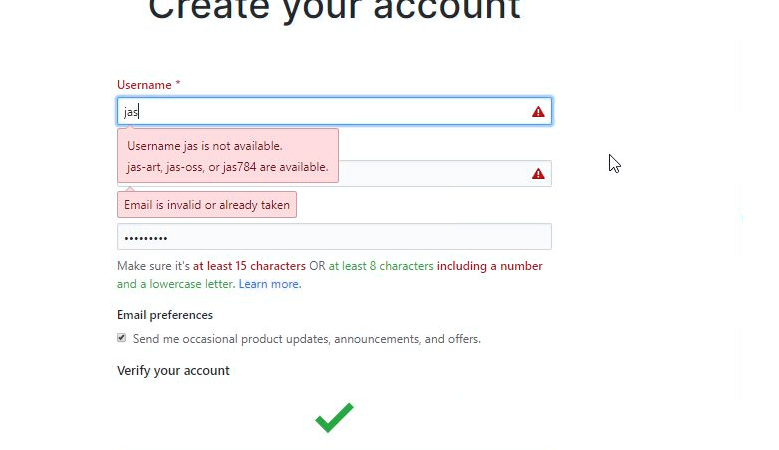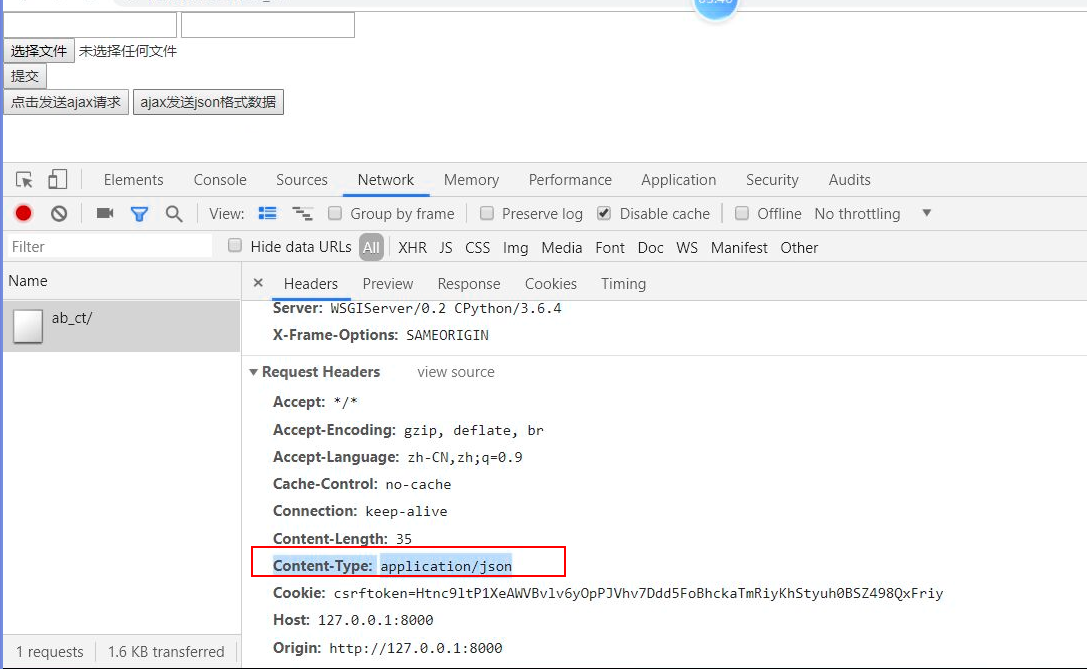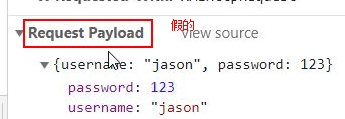Catalog
AJAX introduction
AJAX (Asynchronous Javascript And XML) is translated into Chinese as "Asynchronous Javascript And XML". That is to say, Javascript language is used to interact with the server asynchronously, and the data transmitted is XML (of course, the data transmitted is not only XML).
AJAX is not a new programming language, but a new way to use existing standards. In fact, it's just a function module written based on js
Because the writing of ajax in native js is complicated, we can directly learn the ajax module operation of jQuery package number
The biggest advantage of AJAX is: asynchronous submission, local refresh
Without reloading the entire page, you can exchange data with the server and update part of the page content. (this feature gives users the feeling of completing the request and response process unconsciously.)
AJAX doesn't require any browser plug-ins, but it requires the user to allow JavaScript to execute on the browser.
Synchronous interaction: after the task is submitted, the process waiting for the return result of the task is blocked
Asynchronous interaction: after the task is submitted, you don't need to wait for the return result in place to execute the next line of code directly. The process is non blocking
The result of the task is called back ()Case: the user name interacts with the backend at all times, but the page is not refreshed. Better user experience

The interaction between the front end and the back end is as follows:
1. Enter url in browser window and enter GET 2. Fill in the url of the a tag's href attribute and click GET 3.form form GET/POST 4.Ajax GET/POST
AJAX basic syntax structure
Small case:
First acquaintance with ajax
Case: there are three input boxes and one button on the page
Users input numbers in the first two boxes and click the button to ensure that the data will be sent to the back-end for calculation without refreshing the page
Send the calculated results to the front end and display them in the third input boxEffect:
def index(request):
if request.method == 'POST':
i1 = request.POST.get('i1')
i2 = request.POST.get('i2')
# i1 and i2 are string types. Type conversion is required first
i3 = int(i1) + int(i2)
return HttpResponse(i3)
return render(request,'index.html')ajax Basic grammatical structure
// ajax basic syntax
$.ajax({
// 1. Which backend to submit data to
url:'', // There are three ways to write the submission path of control data, which are consistent with the action attribute of form form form
type:'post', // 2. Specify the current request method
data:{'i1':$('#i1').val(),'i2':$('#I2 '). Val()}, / / 3. Submitted data
// 4.ajax is submitted asynchronously, so you need to give a callback function to handle the returned results
success:function (data) { // data is the return result of asynchronous submission
// Render the result of the asynchronous callback to the third input box through DOM operation
$('#i3').val(data)
}
})Data encoding format of front and back end interaction
urlencoded formdata application/json
Form form
Form form is urlencoded by default to transmit data
urlencoded data format:
username=jason&password=123
django backend will automatically parse and package the data in this format into request.POST
formdata data format:
Whether the django backend uniformly parses the urlencoded data (common key value pairs) into request.POST
The data of formdata file will be automatically parsed and put into request.FILES
application/json
django backend does not do any processing for json format data
It's directly in request.body
ajax submission
ajax is also urlencoded by default
The coding format of front and back data interaction must be consistent with that of data format
You can't cheat others!!!, you can use whatever encoding format you declare
$('#d2').on('click',function () {
$.ajax({
url:'',
type:'post',
contentType:'application/json', // Modify content type parameter
data:JSON.stringify({'username':'jason','password':123}), // Sequence data into json format string
success:function (data) {
alert(data)
}
})
})



How to get json data from the backend?
The front-end does not process the data in json format, but directly inserts it into request.body. We handle json format data by ourselves, and we get binary json
How can we take it ourselves?
We process, decode, deserialize ourselves
json.loads can decode and serialize automatically
def ab_ct(request):
if request.method == 'POST':
# Handle json format data by yourself
json_bytes = request.body
# Extension json.loads can automatically decode and sequence
json_dict = json.loads(json_bytes)
print(json_dict,type(json_dict))
print(request.POST)
print(request.FILES)
return render(request,'ab_ct.html')
AJAX send file
Need to use the built-in object FormData
This object can be transferred to normal key value pairs or files
jQ new keyword generation object
ajax send files(******)
//Built in object FormData
//Send common key value pairs as well as files
// ajax needs built-in objects to send file data
$('#d3').click(function () {
// 1 need to build a built-in object
var myFormData = new FormData();
// 2. When there are many common key value pairs, we can use for loop to add
myFormData.append('username','jason');
myFormData.append('password',123);
// 3 document transmission
myFormData.append('myfile',$('#i1')[0].files[0]; / / get the file object uploaded by the internal user of the input box
// Send ajax request
$.ajax({
url:'',
type:'post',
data:myFormData,
// Two key parameters need to be specified to send the formdata object
processData:false, // Let the browser do nothing with your data
contentType:false, // Do not use any encoding format object formdata has its own encoding format and django can recognize the object
success:function (data) {
alert(data)
}
})
})
Automatic serialization
Help you automate serialization with serializers
from app01 import models
from django.core import serializers
def ab_se(request):
user_queryset = models.Userinfo.objects.all()
user_list = []
for user_obj in user_queryset:
user_list.append({
'username':user_obj.username,
'password':user_obj.password,
'gender':user_obj.get_gender_display(),
})
res = json.dumps(user_list)
res = serializers.serialize('json',user_queryset) # serialize
return HttpResponse(res)
Pager application
All you need to know is how to use it
//The derivation idea can be understood a little
//back-end
current_page = request.GET.get('page', 1)
all_count = book_queryset.count()
# 1 now generate a custom pager class object
page_obj = Pagination(current_page=current_page,all_count=all_count,pager_count=9)
# 2 slice the real queryset data
page_queryset = book_queryset[page_obj.start:page_obj.end]
return render(request,'ab_bc.html',locals())
//Front end
{% for book_obj in page_queryset %}
<p>{{ book_obj.title }}</p>
{% endfor %}
{{ page_obj.page_html|safe }}
CV grand law
class Pagination(object):
def __init__(self,current_page,all_count,per_page_num=2,pager_count=11):
"""
//Encapsulate paging related data
:param current_page: Current page
:param all_count: Total number of data in the database
:param per_page_num: Number of data displayed per page
:param pager_count: Maximum number of pages displayed
//Usage:
queryset = model.objects.all()
page_obj = Pagination(current_page,all_count)
page_data = queryset[page_obj.start:page_obj.end]
//Get data with page ﹣ data instead of the original queryset
//To get the front-end page style, use page obj.page HTML
"""
try:
current_page = int(current_page)
except Exception as e:
current_page = 1
if current_page <1:
current_page = 1
self.current_page = current_page
self.all_count = all_count
self.per_page_num = per_page_num
# Total page number
all_pager, tmp = divmod(all_count, per_page_num)
if tmp:
all_pager += 1
self.all_pager = all_pager
self.pager_count = pager_count
self.pager_count_half = int((pager_count - 1) / 2)
@property
def start(self):
return (self.current_page - 1) * self.per_page_num
@property
def end(self):
return self.current_page * self.per_page_num
def page_html(self):
# If the total page number is less than 11:
if self.all_pager <= self.pager_count:
pager_start = 1
pager_end = self.all_pager + 1
# Total page > 11
else:
# If the current page is < = at most 11 / 2 pages are displayed on the page
if self.current_page <= self.pager_count_half:
pager_start = 1
pager_end = self.pager_count + 1
# Current page is greater than 5
else:
# Page to the end
if (self.current_page + self.pager_count_half) > self.all_pager:
pager_end = self.all_pager + 1
pager_start = self.all_pager - self.pager_count + 1
else:
pager_start = self.current_page - self.pager_count_half
pager_end = self.current_page + self.pager_count_half + 1
page_html_list = []
# Add previous nav and ul Tags
page_html_list.append('''
<nav aria-label='Page navigation>'
<ul class='pagination'>
''')
first_page = '<li><a href="?page=%s">home page</a></li>' % (1)
page_html_list.append(first_page)
if self.current_page <= 1:
prev_page = '<li class="disabled"><a href="#"> previous page
else:
prev_page = '<li><a href="?page=%s">Previous page</a></li>' % (self.current_page - 1,)
page_html_list.append(prev_page)
for i in range(pager_start, pager_end):
if i == self.current_page:
temp = '<li class="active"><a href="?page=%s">%s</a></li>' % (i, i,)
else:
temp = '<li><a href="?page=%s">%s</a></li>' % (i, i,)
page_html_list.append(temp)
if self.current_page >= self.all_pager:
next_page = '<li class="disabled"><a href="#"> next page
else:
next_page = '<li><a href="?page=%s">next page</a></li>' % (self.current_page + 1,)
page_html_list.append(next_page)
last_page = '<li><a href="?page=%s">Tail page</a></li>' % (self.all_pager,)
page_html_list.append(last_page)
# Tag tail
page_html_list.append('''
</nav>
</ul>
''')
return ''.join(page_html_list)